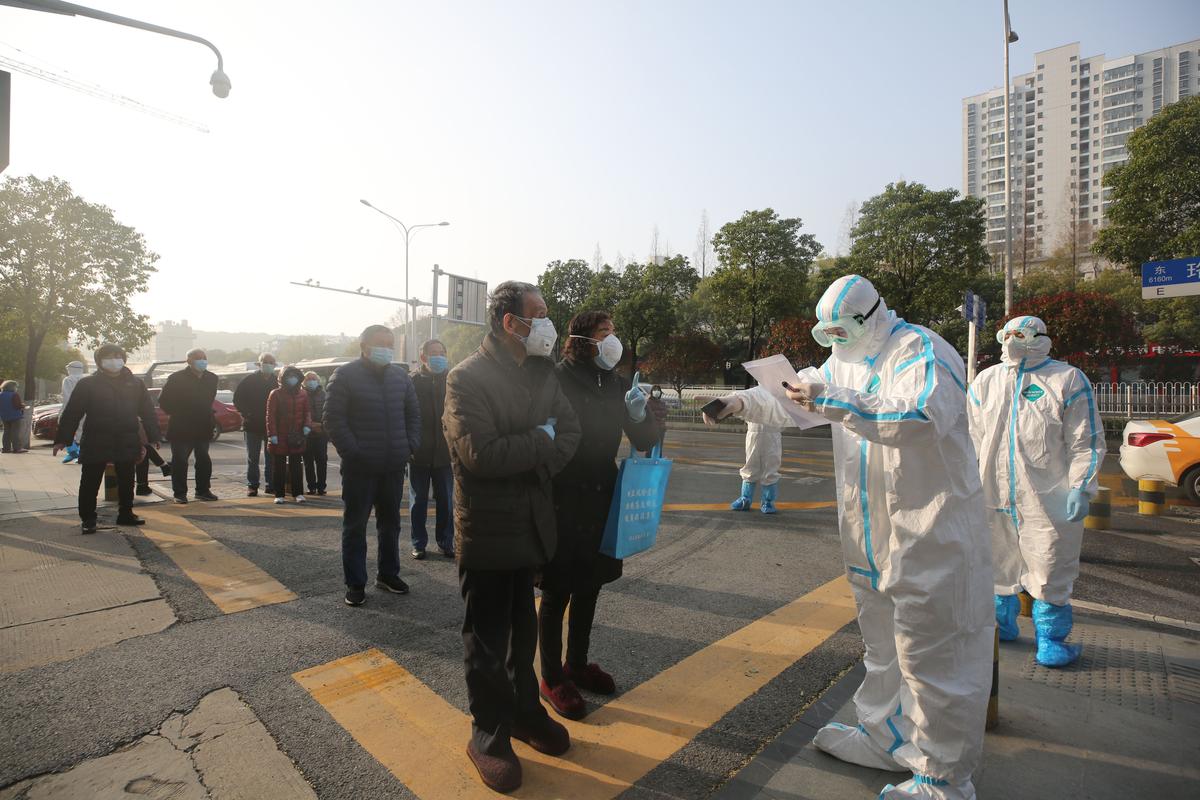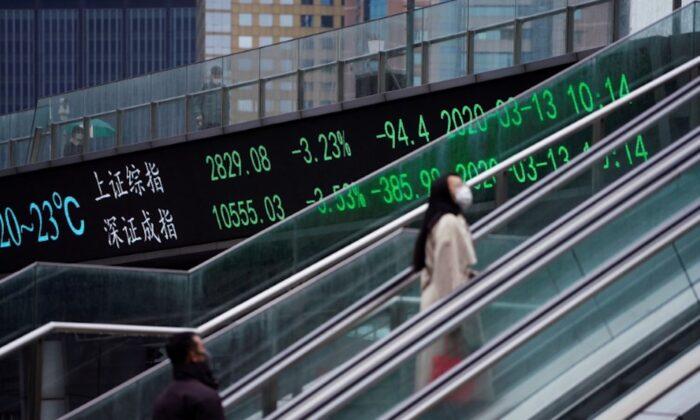BEIJING—China is set to unleash trillions of yuan of fiscal stimulus to revive an economy expected to shrink for the first time in four decades amid the CCP virus pandemic, while a planned growth target is likely to be cut, according to four policy sources.
The ramped-up spending will aim to spur infrastructure investment, backed by as much as 2.8 trillion yuan ($394 billion) of local government special bonds, the sources said. The national budget deficit ratio could rise to record levels, they added.
Beijing is likely to have to lower its economic growth target for 2020 given the prolonged impact of the pandemic, according to the sources involved in internal policy discussions who declined to be identified because of the sensitivity of the matter.
Chinese leaders are considering proposals from advisers to cut it to as low as 5 percent from the original target of around 6 percent agreed in December, they added.
The National Development and Reform Commission, the top state planner, the finance ministry and the central bank didn’t immediately respond to Reuters’s request for comment.
The measures come at a time when private-sector analysts are slashing their growth forecasts for China to lows not seen since the Cultural Revolution ended in 1976, with a sharp contraction expected in the first quarter.
China’s growth hit a near 30-year low of 6.1 percent in 2019, and the landscape has darkened significantly this year as the virus outbreak and strict containment have severely disrupted businesses.
“When the economy is suffering a big shock, it’s necessary to step up fiscal policy support given that monetary policy will have limited effectiveness,” a policy source said.
Higher spending could push the 2020 budget deficit ratio to as high as 3.5 percent—up from last year’s 2.8 percent, the sources said.
The government has long kept a 3 percent ceiling on the annual budget deficit ratio, which was last reached in 2017, and a level of 3.5 percent would be the highest on record, analysts said.
On March 16, National Bureau of Statistics spokesman Mao Shengyong said at a briefing that there was room for appropriately raising the annual budget deficit ratio.
The central bank could, meanwhile, cut banks’ reserve requirement ratios and interest rates further to help spur lending and lower funding costs for firms, the people said.
China has already rolled out multiple fiscal and monetary measures to provide credit and tax relief to companies, especially small businesses that have borne the brunt of the outbreak.

New Infrastructure
Beijing is targeting infrastructure investment as a recovery in consumption could be slowed by rising job losses, while exports could be hit as the global economy reels from the pandemic, the policy sources said.Local governments will be allowed to issue more special bonds, which could hit 2.5 trillion to 2.8 trillion yuan this year, compared with 2.15 trillion yuan in 2019, the people said.
The government aims to speed up the construction of planned key infrastructure projects as well as to launch some new projects for public health, emergency materials supply, 5G networks and data centers that have been endorsed by top leaders, the policy sources said.
“We need to find infrastructure projects that are vital to the economy, but it’s more difficult to find good projects than in 1998 and 2008,” said a second source, referring to the Asian financial crisis and global crisis.
Growth Target Cut Likely
Faced with limited room to stimulate its highly-leveraged economy, Chinese leaders may have to lower their planned growth target for 2020 due to the pandemic, the sources said.Policy advisers are proposing a revised target of 5 to 5.5 percent or around 5 percent, from the planned target of around 6 percent that looks to be well beyond China’s reach.
This year could be crucial for Chinese leader Xi Jinping’s ruling Communist Party to fulfill its goal of doubling gross domestic product (GDP) and incomes in the decade from 2010 to 2020.
A growth rate of about 5.6 percent this year would be enough for achieving those goals.
Any target revisions would be decided by top leaders ahead of the annual parliament meeting, which was originally scheduled for March 5, but was postponed due to the outbreak, the policy sources said.
China tentatively plans to hold its delayed parliamentary gathering in late April or early May, sources have previously told Reuters.






Friends Read Free